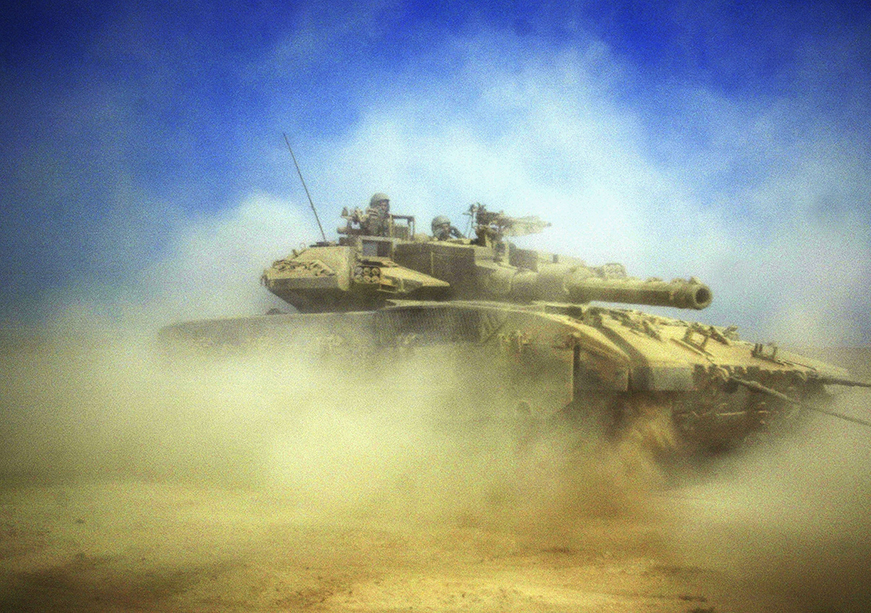-
CENTRES
Progammes & Centres
Location
Military capabilities remain the sine qua non of international politics. Therefore, critical defence reforms in India will have to be pushed with greater vigour. Without institutional, doctrinal and procedural changes, New Delhi will not be able to make the most of this moment in global geopolitics

Image Source: Getty
The year 2024 has so far been tumultuous and eventful which witnessed India’s ties with China thawing, an uptick in violence in Jammu and Kashmir and some key technological developments in wars between Ukraine and Russia and Israel and Hezbollah that hold much importance for India.
The détente between India and China over their long running border standoff emerged with Beijing and New Delhi reaching a partial, important agreement. Of all the agreements between the two countries since outbreak of boundary crisis, the one reached in October 2024 was the most significant which involved the restoration of mutual patrolling and grazing rights in Demchok and Depsang. Whereas, the other friction points resulted in mutual withdrawals and the establishment of buffer zones, but not a restoration of patrolling as part of limited agreements reached in previous years.
The détente between India and China over their long running border standoff emerged with Beijing and New Delhi reaching a partial, important agreement.
As of this writing the Special Representatives (SRs) of the two countries have met for the first time in five years in Beijing. Yet the readouts released following the SRs meeting by both countries are at odds with each other reflecting the gulf that remains between the neighbours. Notwithstanding a tactical retreat by China, structural problems bedevil the relationship that involves competing conceptions order and power in the Indo-Pacific. Beijing views the Indo-Pacific in hierarchical terms whereas New Delhi inclines towards multipolarity. India will have to keep the pressure on China if it wants the present more amenable orientation of Beijing to continue.
On the other hand, Jammu and Kashmir witnessed a surge in terrorist violence just as India and China were reducing tension. This is not too surprising a coincidence as Beijing and Rawalpindi could very much be coordinating strategy against their common foe – India. The terrorist strikes involved several sniper attacks targeting the Indian Army’s patrol units by special operations forces trained by the Pakistan Army’ special forces. Several attacks against non-Kashmiri civilians working on infrastructure projects in Jammu. The challenge for India is that it is unlikely to get any respite from any one of its two major adversarial relationships for a significant duration. If one stabilises or subsides in intensity, the other witnesses a growth in instability and tensions. This compels New Delhi to be on its toes and demonstrates that it actually faces two active military fronts that are only variable in intensity and hostility.
Beyond these challenges are there any lessons India can draw from the between Israel and Iran and its proxies Against Iran and its most formidable regional proxy – Hezbollah, Israel again proved why it remains a formidable intelligence and military power. Its deception in decapitating Hezbollah’s leadership and gravely and fatally wounding a large number of its fighters was the result of deception. The latter was also the result of Israeli intelligence exploiting an opportunity created a decade ago when Hezbollah exposed its Command, Control and Communications (C3) by despatching its fighters to Syria to protect the regime of Bashar Al Assad during the Syrian civil war, notwithstanding his recent overthrow and escape to Russia.
Beyond these challenges are there any lessons India can draw from the between Israel and Iran and its proxies Against Iran and its most formidable regional proxy – Hezbollah, Israel again proved why it remains a formidable intelligence and military power.
Hezbollah’s use of pagers to communicate and coordinate military action allowed Israel to rig the devices the supplied to the militant group resulted in the significant losses incurred by its fighters and elimination of its top leadership compelling Hezbollah to accept a ceasefire on terms favourable to the Israelis. Israel’s achievement is not just one of great cunning and deception, it also holds lessons for India in demonstrating patience and in taking advantage of opportunities as they arise against its primary foes.
Consequently, Israel has emerged stronger and asserted its superiority over Hezbollah weakening Iran’s projection of power in the region. The Israel Defence Forces (IDF) are inflicting even greater losses on Hamas currently through firepower and attrition. Yet these military contests have not yielded outright victory for Israel, but enabled it to assert dominance which was unthinkable even four months ago.
The Russia-Ukraine war also shows how both warring factions have adapted. The Russians have learnt not to expose their C3, logistics nodes and supplies by hardening and dispersing them. Ukraine, has achieved a lot with less capability demonstrating that it can be effective on the battlefield through taut C3 and small unit action. Yet numbers and the strength of capabilities will affect the course of the war as is already evident with Russia making steady progress against Ukraine and the latter doing all it can to hold to its own territory as well as gains in Russia’s Kursk region where the Russians have upped the ante by pounding Ukrainian occupied Kursk.
Ukraine, has achieved a lot with less capability demonstrating that it can be effective on the battlefield through taut C3 and small unit action.
Consequently, going in to 2025, Moscow and Tel Aviv are today stronger and have the military advantage over their adversaries. Push comes to shove, military strength combined with strong motivation to fight will determine military outcomes, underscoring for India’s leadership that military capabilities remain the sine qua non of international politics. And therefore, critical defence reforms will have to be pushed with greater vigour. Without institutional, doctrinal and procedural changes, New Delhi will not be able to make the most of this moment in global geopolitics which seems to favour India.
This commentary originally appeared in Money Control.
The views expressed above belong to the author(s). ORF research and analyses now available on Telegram! Click here to access our curated content — blogs, longforms and interviews.

Professor Harsh V. Pant is Vice President – Studies and Foreign Policy at Observer Research Foundation, New Delhi. He is a Professor of International Relations ...
Read More +
Kartik is a Senior Fellow with the Strategic Studies Programme. He is currently working on issues related to land warfare and armies, especially the India ...
Read More +